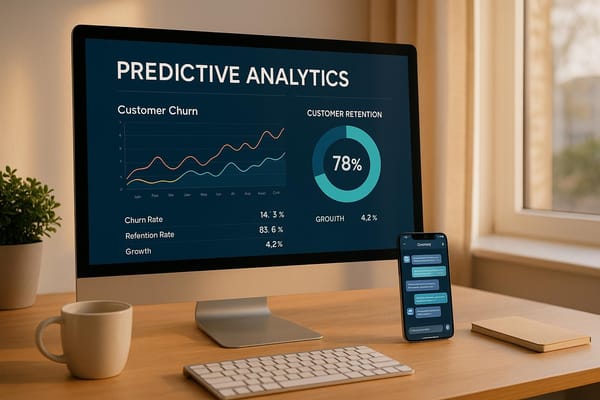Choosing the Right Pricing Model for Your Help Desk Needs
Explore the pros and cons of various help desk pricing models to find the best fit for your team's growth and budget needs.

Struggling to pick the best pricing model for your help desk? Here's the answer upfront: Fixed-price plans often provide the most predictable costs, unlimited features, and scalability for growing teams. But it depends on your needs. Here's a quick breakdown of the four main pricing models:
- Pay Per Agent: Costs increase as your team grows. Best for small, static teams.
- Feature-Based Tiers: Costs are tied to feature levels. Upgrading can be expensive.
- Pay Per Use: Costs depend on usage (e.g., tickets or interactions). Unpredictable during busy periods.
- Fixed Price: One flat fee for unlimited agents, features, and usage. Ideal for growth and budget control.
Quick Comparison Table
| Model | Cost Control | Scalability | Feature Access | Budget Planning |
|---|---|---|---|---|
| Pay Per Agent | Limited | Expensive growth | Full per agent | Challenging |
| Feature Tiers | Moderate | Good until limits | Restricted by tier | Moderate |
| Pay Per Use | Poor | Complex during spikes | Typically full access | Difficult |
| Fixed Price | Excellent | Unlimited growth | Complete access | Simple |
Key takeaway: Fixed-price models are often the most cost-effective and scalable option, but your choice should align with your team size, growth plans, and budget.
1. Pay Per Agent
Pay-per-agent pricing involves a monthly fee for each seat, typically based on different feature tiers. While it may seem simple, this model can heavily influence your support operations and overall expenses.
Costs You Might Not Expect
- Seasonal staffing: Even temporary or part-time agents are billed as full seats.
- Limited access: Managers or stakeholders needing view-only access might still require paid seats.
- Extra features: Add-ons like AI tools or advanced analytics often come with additional per-seat charges.
As your team grows, these per-seat fees increase directly with headcount. This can make budgeting tricky, restrict hiring flexibility, and drive up support costs. Balancing service quality and expense control becomes especially tough during busy seasons or periods of rapid expansion.
Next, let’s dive into feature-based tiers.
2. Feature-Based Tiers
While per-agent pricing ties costs to the number of users, feature-based tiers focus on the functionality you can access. These tiers, often labeled as Basic, Professional, and Enterprise, divide help desk tools into levels. For growing teams, these restrictions can strain budgets just as much as rising per-user fees.
How Tier Restrictions Work
Feature-based tiers often come with limits on key tools and services. These can include:
- Capping the number of articles or SEO tools
- Blocking automation workflows
- Restricting third-party integrations
- Limiting access to advanced analytics
The Hidden Costs of Upgrading
Outgrowing a tier can lead to significant costs. Moving from a basic to a professional plan often involves:
- A price increase of 2-3× between tiers
- A requirement to purchase at least five seats
- Being locked into annual contracts
- Additional training to use new features
- Advanced AI tools (like chatbots, routing, or predictive analytics) only available at the highest tier
A Smarter Alternative
Instead of dealing with restrictive tiers, consider platforms that offer full access to all features from the start. This model provides:
- Access to all tools without artificial limits
- Predictable pricing that grows with your team
- No forced upgrades to unlock essential features
- The ability to use advanced tools whenever needed
The goal is to choose a solution that doesn’t limit your team’s ability to deliver great support due to unnecessary feature restrictions. Look for transparent pricing that includes all core tools without locking them behind higher tiers.
Next, we’ll look at how usage-based pricing shifts costs from seats and features to actual support volume.
3. Pay Per Use
Usage-based pricing links costs to metrics like tickets, AI chatbot interactions, article views, storage, or API calls. While this might seem flexible, it often leads to unpredictable monthly expenses as your support volume increases.
When ticket volume and AI usage go up - exactly when automation is supposed to cut costs - your bills can skyrocket. This creates budget uncertainty, demands constant usage tracking, and ends up penalizing growth during busy seasons or promotional periods.
On the other hand, fixed pricing eliminates these usage penalties. It offers unlimited AI interactions, tickets, and knowledge base access for a consistent monthly fee. With flat pricing, teams can:
- Expand support efforts without worrying about cost spikes
- Budget with confidence and focus on delivering great customer service
Up next: check out fixed-price packages.
4. Fixed Price Package
A fixed price package offers a single monthly fee that covers unlimited agents, features, and usage - keeping costs predictable and straightforward.
This pricing model simplifies budgeting and supports growth without unexpected charges.
What’s included? Everything growing teams rely on:
- Multilingual knowledge base support
- Comprehensive analytics and reporting tools
- Standard integrations and API access
It’s a great fit for small and midsize businesses that prioritize service quality over tracking individual expenses.
Up next, let’s see how fixed pricing compares to per-agent, tiered, and usage-based models.
Model Comparison
Here's a breakdown of how various pricing models measure up when matched against key business needs. This comparison can help pinpoint the best fit for your support team.
| Criteria | Pay Per Agent | Feature Tiers | Pay Per Use | Fixed Price |
|---|---|---|---|---|
| Cost Control | Limited – costs grow with team size | Moderate – predictable until upgrades are needed | Poor – fluctuates with usage volume | Excellent – steady monthly cost |
| Scalability | Expensive as the team expands | Good until hitting feature limits | Complex during usage spikes | Excellent – no extra scaling costs |
| Feature Access | Full access per agent | Restricted by tier | Typically full access | Complete access |
| Budget Planning | Challenging | Moderate | Difficult | Simple |
| Team Flexibility | Limited | Good | Excellent | Excellent |
Cost Control and Scalability
Fixed-price plans offer steady monthly costs, regardless of team size or usage levels. In contrast, pay-per-agent pricing can lead to sharp cost increases, especially during peak staffing periods.
Feature Accessibility
Tiered plans often restrict essential tools - like automation, multilingual support, integrations, and advanced reporting - behind higher-priced tiers.
Over a year of team growth, fixed-price models generally prove more economical per agent and feature compared to pay-per-agent, tiered, or usage-based plans.
Consider your team's growth plans and specific needs to choose the pricing model that works best for you.
Making Your Choice
Consider the following factors when deciding which model works best for you:
- Per-Agent Pricing: Costs can increase quickly as your team grows. For example, adding five agents at $50 each means an extra $250 per month.
- Usage-Based Pricing: Expenses rise with higher activity. For instance, 5,000 chatbot interactions at $0.99 each would total $4,950.
- Feature-Based Tiers: Key features like multilingual knowledge bases, AI automation, custom domain support, advanced analytics, and team collaboration are often restricted to higher-priced plans.
Flat-rate, all-in-one plans offer consistent costs, unrestricted access to features, and unlimited usage - making them a better fit for scaling while staying within budget.





